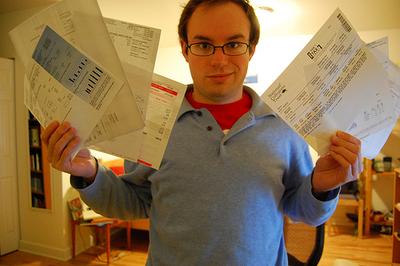Advertisement
Health Insurance Premiums For Dummies

Warning: Harry Potter & The Deathly Hallows, this is not. It's dry and dense, but ultimately, illuminating. And of course, consider the source (an insurer) when you read the bits that suggest state laws governing rate-setting are somewhat onerous.
The post begins with an explanation of "base rates:"
So, let’s start with how the premium rate is calculated for a typical merged market customer. We start with something called the “base rate,” which can be thought of as a dollar amount that the health insurer needs to charge for an “average” customer. (And, by the way, in Massachusetts, about 90% of what the insurer needs to charge goes to paying for medical claims.)
But not all customers are “average,” and the laws in Massachusetts allow health insurers to modify the base rate for each customer to reflect the impact of certain factors. These “rating factors” have demonstrated their reliability in explaining the cost of claims a customer will likely incur in the future.
How we Adjust the Base Rate
What factors do state regulators allow?
-- Age: The age factor for an employer group measures the average age of the members covered through that employer.
-- Industry of the customer: Employees of certain industries consistently show higher or lower medical costs relative to the average.
-- Geographic location: The customer’s location is considered since certain areas of the state have hospitals, physicians and other providers that are much more or less costly than other areas.
-- Size of the employer group (the number of employees), as well as the percentage of those employees who choose to purchase insurance.
-- Wellness and tobacco use: These are relatively new factors that I expect the market will want to use more and more. For example, I increasingly hear that non-tobacco users should be allowed to pay less for their insurance premium.
What these factors all share is that they contribute to a more accurate prediction of how future medical claims costs will vary by customer. And the policy question is how much should these factors adjust the base rate up or down?
Average Base Rate vs Individual Experience
State legislators and regulators try to find the fair balance somewhere between charging all customers the same “average” base rate, and, on the other end of the spectrum, adjusting that average according to the amount of medical claims each customer will incur in the future.That is why health insurers are allowed to use some rating factors to modify premium rates…but with limitations. For example, consider the role of the age factor. Actuarial studies document that the oldest employees with insurance will incur 4 to 5 times the medical claims cost of the youngest. Yet Massachusetts law lets the maximum ratio to be 2 times. So the application of the rating factor is allowed, but just partially. Therefore, the smaller this ratio becomes, the greater the cost shift from older to younger persons.
Still confused? Post your question about how premiums are calculated, and I'll try to get an answer.
This program aired on November 23, 2010. The audio for this program is not available.
